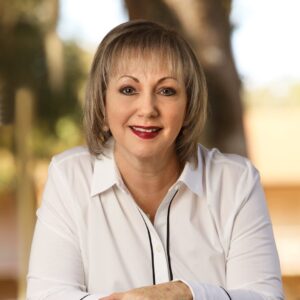The Pages of My Life – Eva Marie Everson

Art imitates life. Life imitates art. Either way, we are affected.
I find the story of David, King of Israel, fascinating. How this young boy—a shepherd to his father’s flock, the nearly forgotten son, the brunt of his older brothers’ jokes and jabs—rose from the deserts of Israel to sitting on its throne is a story only God could write.
Whenever I read the final biblical passages of David’s life, my eye fill with tears. So many accomplishments, I think. So many mistakes.
David’s mistakes, however, dropped their blood stains on his family, however, and—for that—I grieve even more.
So it was that a few years back when bestselling author Miriam Feinberg Vamosh (who lives in Israel) reached out to ask if I would work on a novel about David’s daughter Tamar, I jumped at the chance. She and I had written another book together—a Jewish woman and a Christian woman “walking” the Land of the Bible together—previously. Working with her again would be such a blessing.
Miriam, who has her Master’s degree in archeology and heritage, told me that an ancient document concerning David had been discovered in the 1700s in Cochin, India. A friend of hers, Israeli Professor Meir Bar-Ilan, had spent years studying it (it is currently located at Cambridge University). He then wrote the definitive work titled The Words of Gad the Seer (the document is purportedly written by David’s advisor, Gad). Within the thirteen chapters of the document, there is an entire chapter dedicated to “what happened to Tamar after her half-brother raped her.”
“Professor Bar-Ilan thinks we should tell this story,” Miriam told me. After hearing it, I agreed.
Agreeing is one thing; these are just spoken words. Doing it is another . . . mainly because as women, Miriam and I, to write the best work possible, had to stand before the mirror of familial betrayal and sexual assault. But more importantly, survival—the rising above. We also had to face what the Bible tells us about Tamar and how this document completed her story.
Should we go deeper than the Bible’s account? Should we dare to imagine that Tamar went beyond going into her brother, Absolom’s, house, never to emerge again? Or could we entertain a life beyond tragedy for a princess?
I made an admission to Miriam—many years earlier, I, too, had made a choice to rise above sexual assault to become a strong woman of God. Not one who stopped living and breathing, who ceased to have anything to give after the night of her attack . . . but one who shook that proverbial dust from her feet and moved forward. One who created a better ending to her story than a simple “closing of the door.” I understood all too well that to write this meant we had to go into all the emotions, placing ourselves in Tamar’s skin.
For forty weeks (all total), Miriam and I worked on what would become Ahoti*: A Story of Tamar (Paraclete 2024). We dissected the professor’s research. We pored over our Bibles. We massaged the “what ifs.” We wrote, edited, and rewrote. We expressed surprise . . . anger . . . angst . . . wonder . . . and we thrilled at the notion that Tamar’s life hadn’t ended with her half-brother’s betrayal.
As we waited for the book’s release, I answered questions about whether I felt we had “added to the Bible,” to which I replied, “Yes, we did.”
But so does every work of biblical fiction, every biblically inspired film. This is what we do if we are writers whose work is inspired by historical events—we take what little bit we know, and we stretch our imaginations. . . we go further by thinking beyond the few or the many words we have in front of us. A daunting, but exciting task.
After the book released last year at this time, Miriam and I were contacted by women whose lives had been altered by sexual assault. But our book, they said, had given them hope. Reading the words had provided a glimmer of light on a dark subject. Most importantly, our work had reminded them that God’s hand reaches beyond the messes by turning mourning into gladness, brokenness into dancing, and the unexpected moments of lie into a life filled with hope for a better tomorrow.
The various awards we’ve received for the work cannot compare to these stories.
The struggle to face Tamar’s demons—and our own—has been worth it, even if it had been only one life Ahoti touched.
*Ahoti is Hebrew for “my sister.” The authors chose this title because of the roles Tamar’s brother Absolom and her half-brothers Amnon and Solomon played in her life according to the document.

Eva Marie Everson is the multiple award-winning author of fiction, nonfiction, and children’s books. She is the CEO of Word Weavers International, a worldwide service to writers through critique and education, the Director of Florida Christian Writers Conference, the Director of The Selah Awards and The Foundation Awards (BRMCWC), and a popular speaker at writers conferences and women’s events. She recently received her third theological degree, a Bachelor of Biblical Exposition (magna cum laude). She and her husband live in Central Florida where they enjoy their children and grandchildren. They are owned by a cat named Vanessa.
If you’ve enjoyed this Pages of My Life, find out more by checking out Eva Marie’s BRRC author page.
The Conversation
This is good, Eva Marie. What a privilege to affect women’s lives that way. This is what Christian fiction should do, Biblical, contemporary or historical.